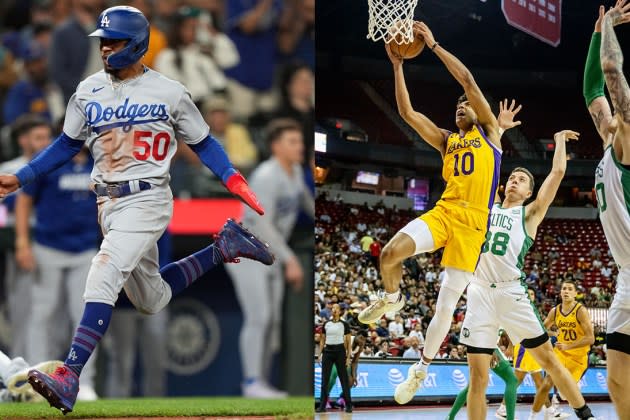Max to Add Sports Tier for $10 Per Month After Promo Period, Launching in Time for MLB Playoffs

Live sports are coming to Max next month.
The Warner Bros. Discovery-owned streaming platform will launch a new premium sports tier Oct. 5, just in time for the Major League Baseball playoffs, which start two days later.
More from The Hollywood Reporter
The new tier will be called the Bleacher Report Sports Add-On (or B/R Sports), taking the name of WBD’s digital sports news, opinion and highlights brand. It will cost $10 per month on top of the subscription for Max, however it will be available for free during a promotional period that runs through the end of February, covering the MLB playoffs, and much of the NBA and NHL seasons.
“Part of our thinking about setting the $9.99 monthly price and an upcharge to it, is we don’t think the way that it’s currently being done in streaming where most of the other streamers are just giving away the content for free is viable for the long term, number one, and number two it disadvantages and almost incentivizes the switch [from pay TV to streaming] which is not something that we’re necessarily looking to do,” says JB Perrette, the CEO for global streaming and games at Warner Bros. Discovery, in an interview with The Hollywood Reporter.
“[We thought] if we’re gonna do this, let’s do it in a way that is very much a compelling proposition to viewers,” adds WBD Sports chairman and CEO Luis Silberwasser. “So we purposely decided we’re going to give consumers the same choice in terms of the live games, but you don’t have to sacrifice pay TV to go watch on Max, or vice versa.”
The company says that all told, it will stream more than 300 live games each year, as well as Bleacher Report live video content and library fare. WBD Sports has rights to MLB, NBA and NHL games (including the playoffs and events like the NHL Winter Classic), as well as NCAA March Madness basketball, U.S. National Team soccer and WBD’s own golf brand, The Match.
According to Perrette, the decision to launch with a long promotional period was to get the product up and running in time for the MLB playoffs and NBA and NHL seasons, all of which could be catalysts for viewers. The company also wants to give users a chance to sample the offering, and for the company to see how it’s being used.
But there are also technical and business considerations at play: Noting the recent Charter-Disney carriage dispute, Perrette says that “we want to do this in a way that ultimately finds as many ways as possible to partner with them to help us upsell the tier, and that requires both some commercial work as well as some product and technical work of how we integrate,” he says. “And so we need enough lead time to be able to actually have those conversations constructively and work with them on the technical and commercial solves.
“It’s not to say that people won’t have concerns, in this environment that’s impossible to not have,” he adds. “We want to figure out ways to work with the partners and there’ll be different constructs with each of the partners, so this gives us enough runway to be able to have those conversations constructively and do the work that needs to happen.”
And of course the promotional period will end as the NBA and NHL begin thinking about the playoffs, and with NCAA March Madness basketball about to launch.
“We thought that’s a good a good point where people should make up their minds and hopefully they’re satisfied with the product,” Silberwasser says.
WBD is betting that the sports streaming model that has worked for it in Europe (where it owns Eurosport) is the model that will ultimately work in the U.S.
“Everywhere else in the world other than the United States, sports is sold separately,” Perrette says. “And part of the reason the pay-TV bundle is in the state it’s in, is frankly because too much expensive sports got jammed into it at the basic entertainment tier, making it just too expensive for people who want entertainment and don’t necessarily want sports.
“We think the upsell tier is in line with the way the rest of the world has done it for years and successfully done it and profitably done it,” he adds. “It creates a long-term ecosystem that’s much more viable than giving it away for free, and ultimately is good for consumer choice and targeting new consumers.”
As for the decision to brand the new tier with the Bleacher Report name, the executives say it stemmed from what they see as the strength of the B/R digital brand.
“Part of the strategy to try and gain incremental reach is to try to attract the younger viewers who are most likely to be leaving that pay-TV ecosystem,” Silberwasser says. “We’re not trying to take anything away and hopefully not incentivizing current people who are on the linear side to move.
“[So we said] why don’t we be more surgical about this and use the Bleacher Report brand, which today is the number one digital brand with younger sports viewers?” Silberwasser adds. “How can we leverage the Bleacher Report brand, all the content that Bleacher is doing, the promotional platform, to try to really reach those incremental viewers? And so that’s when we landed on Bleacher Report as the environment inside Max.”
Best of The Hollywood Reporter

 Yahoo News
Yahoo News 